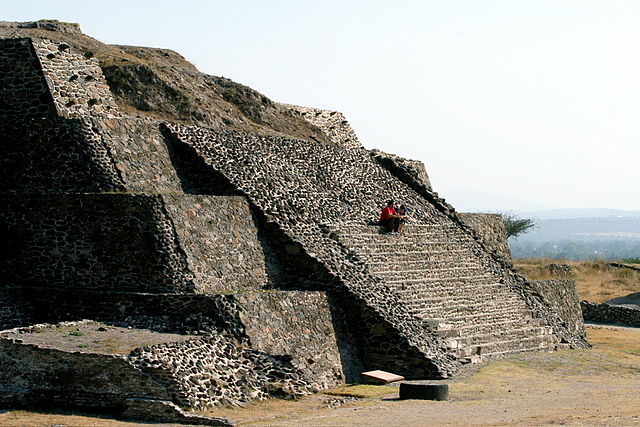The Atlantean figures are four anthropomorphic statues belonging to the Toltec culture in pre-Columbian Mesoamerica. These figures are "massive statues of Toltec warriors". They take their post-Columbian name from the European tradition of similar Atlas or Atalante figures in classical architecture.
Columns in the form of Toltec warriors in Tula
This sculpture, created by the Olmecs, is located in the Museum of Anthropology of Xalapa, Veracruz. The sculpture represents the first use of atlantes in Mesoamerica. However, it differs from the Atlantean figures in Tula because it is not in-the-round, and is instead a relief on a table.
The four monumental Atlantean figures in Tula were located on top of Pyramid B. Originally, they provided the support for a structure on top of the pyramid.
A group of Atlantean figures created by the Maya peoples from Chichen Itza
The Toltec culture was a pre-Columbian Mesoamerican culture that ruled a state centered in Tula, Hidalgo, Mexico, during the Epiclassic and the early Post-Classic period of Mesoamerican chronology, reaching prominence from 950 to 1150 CE. The later Aztec culture considered the Toltec to be their intellectual and cultural predecessors and described Toltec culture emanating from Tōllān as the epitome of civilization. In the Nahuatl language the word Tōltēkatl (singular) or Tōltēkah (plural) came to take on the meaning "artisan". The Aztec oral and pictographic tradition also described the history of the Toltec Empire, giving lists of rulers and their exploits.
A Toltec-style clay vessel (American Museum of Natural History).
Pyramid C at Tula, Hidalgo
Tempo Tlahuizcalpantecuhtl (Pyramid B), the largest structure at the Tula archaeological site. Atlantean figures are on its apex.
Stucco relief at Tula: coyotes, jaguars and eagles feast on human hearts.








